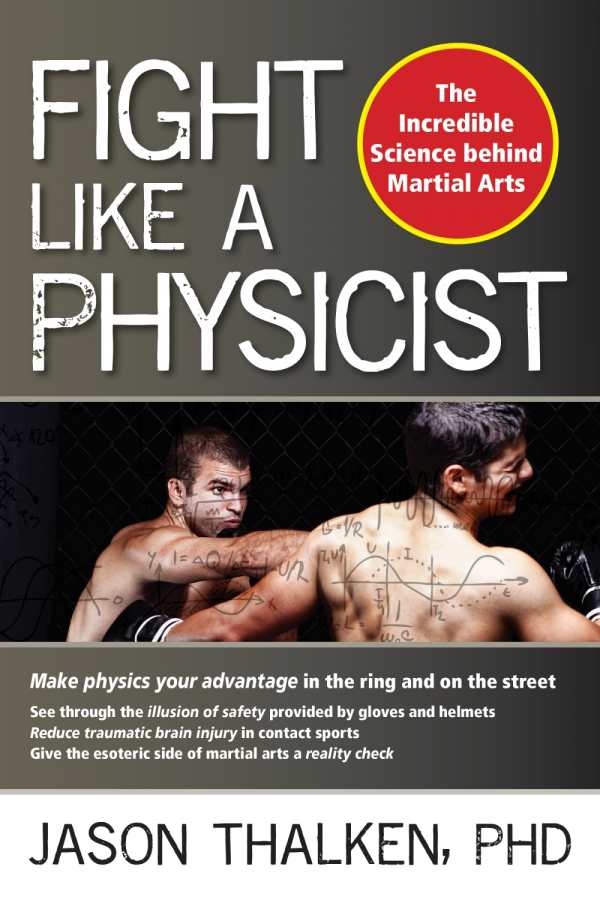
Fight like a Physicist
The Incredible Science behind Martial Arts
- 2015 INDIES Finalist
- Finalist, Sports (Adult Nonfiction)
Fight like a Physicist is a cool concept that makes physics tangible for fans of fighting sports.
As a martial arts practitioner with a doctorate in physics, Jason Thalken has an interesting perspective on fighting sports, and he applies his knowledge of scientific principles to his chosen sport in Fight like a Physicist. Though there probably isn’t quite enough material here for a full book, the early sections do a solid job explaining the physics in a relatable way that gives fighters some perspective on how to incorporate scientific knowledge to fight better.
Fight like a Physicist finds a nice middle ground in terms of the material’s tone —the writing is simple enough for its target audience to understand and apply, while it still delivers meaningful scientific concepts. For example, the book uses levers as a way to explain the relationship between distance and force, and explains how the dispersal of force on impact can make particular blows more or less effective.
Thalken includes numerous charts and graphs throughout the book. Like many of the concepts he writes about, these visual representations will look familiar to anyone who took physics in high school, but may not have thought about the material since then. He throws in the occasional “math box,” to highlight mathematical concepts like the force curve or the center of mass, while using both equations and sample fight-based scenarios. Combined, these elements make Fight like a Physicist both a useful primer and an enjoyable refresher.
Though the early chapters are strong, the book does lose its way a bit late, with chapters that seem shoehorned in. Thalken includes a chapter about brain injuries affecting football players (including Chronic Traumatic Encephalopathy), and posits a theory about how applied force might manifest in such injuries. However, the author also has a patent pending on a new helmet—which he discloses honestly, but which does make an already tangential chapter feel like a sales pitch at times.
Other sections criticize practices like tai chi for their lack of scientific basis, or advocate fighting back against criminals in dangerous real-life situations, but these parts feel unnecessary, and the tone deviates from the book’s strengths. They don’t quite fit the fighting-sports theme, and the science in these chapters is less than clear cut, especially when compared to the universal principles discussed earlier.
At its best, in the early chapters, Fight like a Physicist is a cool concept that makes physics tangible for fans of fighting sports, and can just as easily get more science-minded readers interested in those sports.
Reviewed by
Jeff Fleischer
Disclosure: This article is not an endorsement, but a review. The publisher of this book provided free copies of the book and paid a small fee to have their book reviewed by a professional reviewer. Foreword Reviews and Clarion Reviews make no guarantee that the publisher will receive a positive review. Foreword Magazine, Inc. is disclosing this in accordance with the Federal Trade Commission’s 16 CFR, Part 255.
